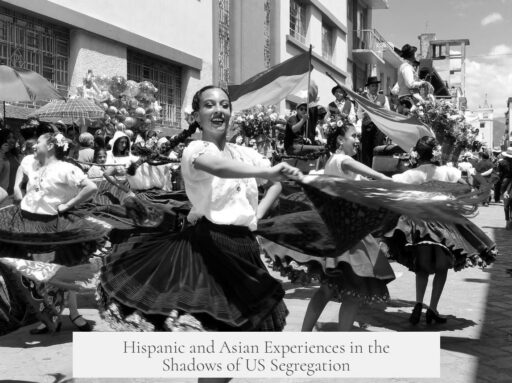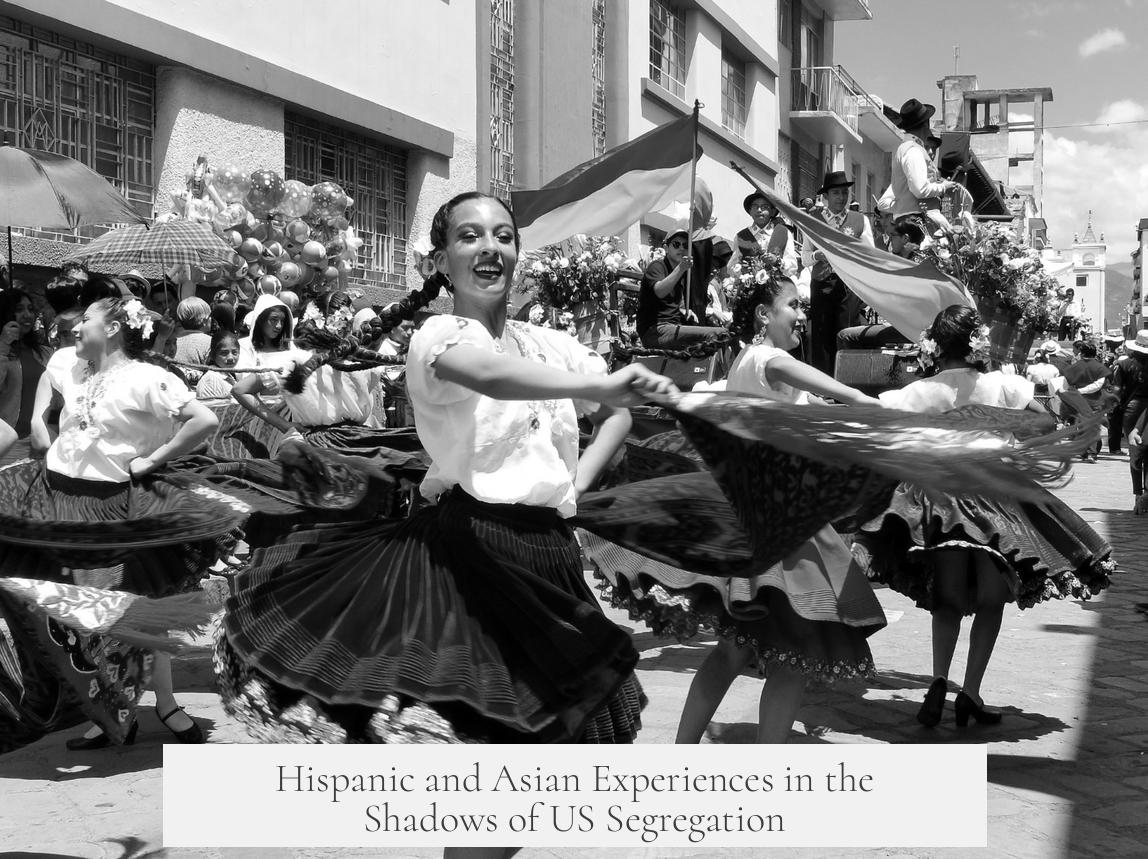During US segregation, Hispanic and Asian Americans faced widespread discrimination, segregation, and legal injustices similar to those experienced by Black Americans. Segregation policies extended beyond a simple Black-white binary and deeply affected these communities socially, economically, and politically.
Asian Americans encountered exclusion and hostility that severely limited their rights and opportunities. The 1882 Chinese Exclusion Act was a key legal restriction, banning most Chinese immigration and setting a precedent for anti-Asian immigration laws. This law remained effective, with some challenges, until World War II.
During the mid-19th century, large waves of East Asian immigrants, particularly from China and Japan, arrived in the United States due to economic upheaval in their home countries and labor demands in the US. This influx sparked a backlash resulting in restrictive immigration policies like the Page Act of 1875 and aggressive social hostility. Asian communities suffered violent attacks, including the massacres in Rock Springs, Wyoming (1885) and Hells Canyon, Oregon (1887). In response, many formed insular communities, such as Chinatowns, for protection and cultural preservation.
World War II intensified discrimination against Japanese Americans with the forced internment of over 120,000 individuals. The internment caused significant economic harm, especially through the confiscation of Japanese-American farms and businesses. Their agricultural expertise had made them among the most successful farmers on the West Coast, but much of their property was lost permanently. Although reparations were made decades later, these payments covered only a fraction of the losses.
Hispanic Americans also suffered through legally sanctioned discrimination and economic marginalization during segregation. Despite the Treaty of Guadalupe Hidalgo (1848) granting Mexican Americans citizenship in annexed territories, Anglo settlers seized vast communal lands and converted them into private properties, dispossessing many Mexican-American families.
This upheaval resulted in economic hardship and forced many Mexican Americans into exploitative labor contracts resembling sharecropping. Beginning in the early 20th century, immigration policies subjected Mexican migrants to harsh medical inspections involving humiliating and dangerous procedures under the guise of disease prevention.
In 1917, a young Mexican-American woman, Carmelita Torres, resisted these procedures. Her defiance sparked a three-day protest but did not halt the discriminatory health practices, which continued into the 1950s.
The Great Depression exacerbated hostility toward Latinos through the Mexican Repatriation programs of the 1930s. Up to two million people of Mexican descent were forcibly deported to Mexico, many of whom were US citizens. This purge relied on racial profiling and blurred distinctions between citizenship statuses. Paramilitary raids in cities like Los Angeles rounded up residents with minimal legal due process.
Subsequent actions, such as “Operation Wetback” in 1954, continued mass deportations of Mexican Americans, perpetuating an atmosphere of fear and instability. Additionally, forced and coerced sterilization programs targeted Latina women in Texas, California, and Puerto Rico, affecting as many as one in three women in Puerto Rico by the mid-20th century.
These forms of segregation and discrimination operated legally and socially in parallel with and beyond the well-known Jim Crow laws aimed primarily at Black Americans. They blocked access to housing, education, employment, justice, and political power for Hispanic and Asian communities.
- Businesses frequently refused service to non-white patrons or segregated facilities.
- Sundown towns prohibited minorities from living or staying overnight.
- Redlining and racial covenants restricted where non-whites could live and own property.
- Criminal justice systems routinely failed to protect minority victims and sanctioned extrajudicial punishments against accused minorities.
Most histories focus predominantly on Black-white segregation, leaving the broader range of minority experiences less explored. Hispanic and Asian American struggles highlight how segregation in the US adapts to reinforce hierarchies across multiple groups over time.
This wider perspective reveals that segregation in America is not a binary condition but a complex network of exclusionary policies that evolve to sustain social stratification.
Key takeaways:
- Asian Americans faced legal exclusion like the Chinese Exclusion Act, violent attacks, and World War II internment, with major economic losses.
- Hispanic Americans suffered land dispossession, exploitative labor systems, harsh immigration policing, mass deportations, and sterilization abuses.
- Segregation affected many groups, not just Black Americans, operating through legal, social, and economic means.
- History education often overlooks the experiences of Hispanic and Asian Americans during segregation, limiting understanding of systemic racism’s full scope.
- Segregationist policies continue to adapt, reflecting broader mechanisms of racial and ethnic control beyond a simple Black-white dichotomy.




